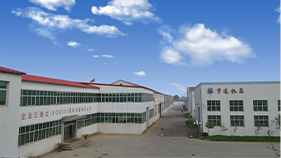
-
 Afrikaans
Afrikaans -
 Albanian
Albanian -
 Amharic
Amharic -
 Arabic
Arabic -
 Armenian
Armenian -
 Azerbaijani
Azerbaijani -
 Basque
Basque -
 Belarusian
Belarusian -
 Bengali
Bengali -
 Bosnian
Bosnian -
 Bulgarian
Bulgarian -
 Catalan
Catalan -
 Cebuano
Cebuano -
 Corsican
Corsican -
 Croatian
Croatian -
 Czech
Czech -
 Danish
Danish -
 Dutch
Dutch -
 English
English -
 Esperanto
Esperanto -
 Estonian
Estonian -
 Finnish
Finnish -
 French
French -
 Frisian
Frisian -
 Galician
Galician -
 Georgian
Georgian -
 German
German -
 Greek
Greek -
 Gujarati
Gujarati -
 Haitian Creole
Haitian Creole -
 hausa
hausa -
 hawaiian
hawaiian -
 Hebrew
Hebrew -
 Hindi
Hindi -
 Miao
Miao -
 Hungarian
Hungarian -
 Icelandic
Icelandic -
 igbo
igbo -
 Indonesian
Indonesian -
 irish
irish -
 Italian
Italian -
 Japanese
Japanese -
 Javanese
Javanese -
 Kannada
Kannada -
 kazakh
kazakh -
 Khmer
Khmer -
 Rwandese
Rwandese -
 Korean
Korean -
 Kurdish
Kurdish -
 Kyrgyz
Kyrgyz -
 Lao
Lao -
 Latin
Latin -
 Latvian
Latvian -
 Lithuanian
Lithuanian -
 Luxembourgish
Luxembourgish -
 Macedonian
Macedonian -
 Malgashi
Malgashi -
 Malay
Malay -
 Malayalam
Malayalam -
 Maltese
Maltese -
 Maori
Maori -
 Marathi
Marathi -
 Mongolian
Mongolian -
 Myanmar
Myanmar -
 Nepali
Nepali -
 Norwegian
Norwegian -
 Norwegian
Norwegian -
 Occitan
Occitan -
 Pashto
Pashto -
 Persian
Persian -
 Polish
Polish -
 Portuguese
Portuguese -
 Punjabi
Punjabi -
 Romanian
Romanian -
 Russian
Russian -
 Samoan
Samoan -
 Scottish Gaelic
Scottish Gaelic -
 Serbian
Serbian -
 Sesotho
Sesotho -
 Shona
Shona -
 Sindhi
Sindhi -
 Sinhala
Sinhala -
 Slovak
Slovak -
 Slovenian
Slovenian -
 Somali
Somali -
 Spanish
Spanish -
 Sundanese
Sundanese -
 Swahili
Swahili -
 Swedish
Swedish -
 Tagalog
Tagalog -
 Tajik
Tajik -
 Tamil
Tamil -
 Tatar
Tatar -
 Telugu
Telugu -
 Thai
Thai -
 Turkish
Turkish -
 Turkmen
Turkmen -
 Ukrainian
Ukrainian -
 Urdu
Urdu -
 Uighur
Uighur -
 Uzbek
Uzbek -
 Vietnamese
Vietnamese -
 Welsh
Welsh -
 Bantu
Bantu -
 Yiddish
Yiddish -
 Yoruba
Yoruba -
 Zulu
Zulu
Types of Thread Rolling Machines and Their Applications in Manufacturing
Understanding the Types of Thread Rolling Machine Products
Thread rolling machines are essential equipment in the manufacturing industry, primarily used to create threads on cylindrical workpieces. These machines utilize a process known as rolling, which is a cold forming technique that increases the strength of the threads while providing a dimensional precision that cutting methods may not achieve. This article explores various types of thread rolling machine products, their applications, and the advantages they offer.
1. Flat Die Thread Rolling Machines
Flat die thread rolling machines are among the most commonly used types in the industry. This machine uses two flat dies to create threads on the workpiece as it is fed between them. The primary advantage of flat die machines is their ability to produce high volumes of threaded components quickly. They are particularly effective for short runs and can accommodate various materials, making them versatile for manufacturers.
Flat die machines can create different thread forms, such as metric, unified, or custom threads. They are widely used in automotive and aerospace industries for producing components like bolts, screws, and shafts, which require high tensile strength and precision.
2. Cylindrical Thread Rolling Machines
Cylindrical thread rolling machines, also known as rotary threaders, are designed to roll threads on long and cylindrical workpieces
. Unlike flat die machines, these rollers have a cylindrical shape that wraps around the workpiece, allowing for continuous threading along longer lengths.These machines are particularly effective for producing long threaded rods and studs. The cylindrical design minimizes material waste, as it only deforms the surface to create the thread without cutting away excess material. This not only enhances productivity but also contributes to cost efficiency. Industries such as construction, oil and gas, and general manufacturing often utilize cylindrical thread rolling machines for their robust capabilities.
3. Plunge Thread Rolling Machines
types of thread rolling machine products

Plunge thread rolling machines operate by plunging the workpiece into the rolling dies, typically in a vertical orientation. This technique allows for the generation of threads on both ends of a workpiece simultaneously. Plunge rolling machines are highly efficient for short threaded components and can produce different thread pitches in one cycle, making them adaptable for various production needs.
One of the key benefits of plunge thread rolling is the ability to handle smaller diameters with precision. This makes them suitable for manufacturing fasteners and specialized components often required in electronics and medical devices.
4. Thread Rolling Machines with Automatic Feed
Automation in thread rolling processes has significantly increased productivity in manufacturing operations. Thread rolling machines with automatic feed mechanisms are designed to minimize manual intervention. These machines can automatically load, thread, and unload workpieces, allowing for continuous production runs with little downtime.
Automatic feed machines are particularly advantageous for bulk production where consistency and speed are crucial. Industries that demand high volume and quick turnarounds, such as electronics and automotive, benefit greatly from this technology.
Conclusion
The variety of thread rolling machine products available today caters to the diverse needs of different industries. Whether it’s flat die, cylindrical, plunge, or automated feed machines, each type offers unique advantages that enhance production efficiency, save costs, and improve product quality. The thread rolling process not only meets the high standards of precision that modern industry demands but also contributes to stronger and more reliable threaded components.
In summary, as manufacturers continue to seek ways to optimize their production processes, understanding the types of thread rolling machines available is essential. By selecting the right machine for specific applications, businesses can ensure efficiency and quality in their manufacturing efforts.
